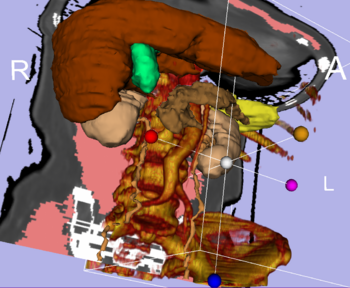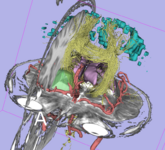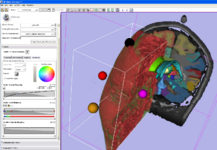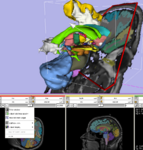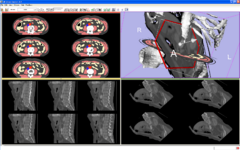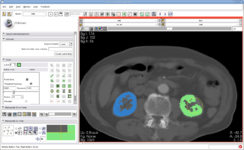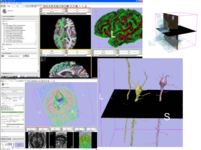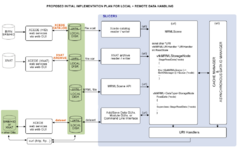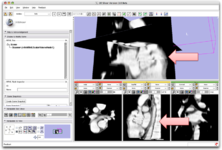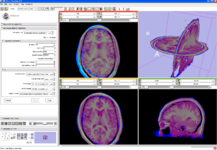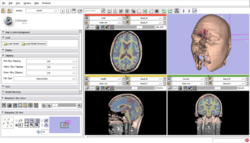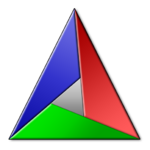Difference between revisions of "Announcements:Slicer3.2"
| Line 33: | Line 33: | ||
Image:DataLoadingStartPlan.png|[[Slicer3:Remote_Data_Handling|Remote Data Handling]] allows uploads and downloads from image informatics frameworks such as BIRN, and XNAT | Image:DataLoadingStartPlan.png|[[Slicer3:Remote_Data_Handling|Remote Data Handling]] allows uploads and downloads from image informatics frameworks such as BIRN, and XNAT | ||
Image:Slicer_IGTL_PartialImage.png|[http://wiki.na-mic.org/Wiki/index.php/OpenIGTLink OpenIGTLink] interfaces to devices such as scanners, trackers, and robots | Image:Slicer_IGTL_PartialImage.png|[http://wiki.na-mic.org/Wiki/index.php/OpenIGTLink OpenIGTLink] interfaces to devices such as scanners, trackers, and robots | ||
| − | Image:DataFusion.png|Result of combining affine and b-Spline registration | + | Image:DataFusion.png|Result of combining affine and b-Spline registration: Robust and fast (parallelized) registration algorithms. |
Image:EMSVisualizeTutorialResultsData.png|[[Modules:EM-Segmenter-Documentation|EM Segmenter:]] A configurable image segmentation tool that uses intensity distributions along with atlas information | Image:EMSVisualizeTutorialResultsData.png|[[Modules:EM-Segmenter-Documentation|EM Segmenter:]] A configurable image segmentation tool that uses intensity distributions along with atlas information | ||
Image:CMakeLogoMediumResolution.png|[http://wiki.na-mic.org/Wiki/index.php/NAMIC_Wiki:Software_Process Quality Software Process] The NA-MIC Kit employs a test-driven software development process. Slicer3 also has a [http://wiki.na-mic.org/Wiki/index.php/NAMIC_Wiki:Software_Process#The_Slicer_Build_Process new build process]. | Image:CMakeLogoMediumResolution.png|[http://wiki.na-mic.org/Wiki/index.php/NAMIC_Wiki:Software_Process Quality Software Process] The NA-MIC Kit employs a test-driven software development process. Slicer3 also has a [http://wiki.na-mic.org/Wiki/index.php/NAMIC_Wiki:Software_Process#The_Slicer_Build_Process new build process]. | ||
Revision as of 13:36, 4 June 2008
Home < Announcements:Slicer3.2Introduction
The community of Slicer developers is proud to announce the release of Slicer 3.2. This effort is the culmination of hundreds of person years and tens of millions of dollars of effort [1]. Slicer leverages state of the art open-source toolkits for visualization, medical image analysis, software process, and other tools for processing and accessing data (for more information see the description of the NA-MIC Kit). Slicer offers these capabilities as part of the open-source framework known as the NA-MIC Kit, which facilitates on-going research in biomedical computing, supports commercialization through NA-MIC Kit components, and provides a spectrum of capabilities suitable for researchers with varying levels of computer skills.
|
Slicer 3.2 is a general purpose biomedical computing application with extensive built-in visualization and analysis capabilities, accessible through an easy to use graphical interface. For advanced users, Slicer may be extended at run-time with user-defined plug-in modules. Release candidates for this application will be available the first week of June 2008. This new release contains hundreds of changes to the software. Highlights include:
Click here to download different versions of Slicer3 and find pointers to the source code, mailing lists and bug tracker. Please note that Slicer continues to be a research package and is not intended for clinical use. Testing of functionality is an ongoing activity with high priority, however, some features of Slicer3 are not fully tested. |
Integrated Volume Rendering: View of the abdominal atlas Bone and large vessels are volume rendered. |
Highlights
- Slicer v3.2 - New and Improved Feature Highlights
Volume Rendering: Fully integrated volume rendering with cropping for easy exploration of volumetric data
Implicit Slice Widget: An interactive tool for specifying oblique views (part of the VTK widget family).
The Lightbox: Functionality for displaying cross-sectional data in columns and rows.
Interactive Editor: This new module allows interactive segmentation with robust 2D and 3D algorithms
IO: Improved IO capabilities include support for DICOM, NRRD, NIFTI, Tiff, JPG, Freesurfer, FITS and a number of other formats
Glyphs on tracts:
New Diffusion Imaging infrastructure includes
dicom import
gradient editor
visualiztionRemote Data Handling allows uploads and downloads from image informatics frameworks such as BIRN, and XNAT
OpenIGTLink interfaces to devices such as scanners, trackers, and robots
EM Segmenter: A configurable image segmentation tool that uses intensity distributions along with atlas information
Quality Software Process The NA-MIC Kit employs a test-driven software development process. Slicer3 also has a new build process.
Slicer in Numbers
The numbers in this table represent the components of the NA-MIC kit. Slicer 3 is based on the NA-MIC kit.
Source: http://www.ohloh.org Captured on May 30 2008. The numbers in the column entitled "lines of code" are hard numbers. The other two columns are estimates based on some assumptions. Please see the Ohloh website for an explanation of how the numbers were computed.
| Package | Lines of code | Person years | Price tag at 100k per person year |
| Slicer | 587,919 | 161 | $16,068,440 |
| KWW | 189,627 | 49 | $ 4,925,590 |
| VTK | 1,344,989 | 385 | $38,521,873 |
| ITK | 711,474 | 197 | $19,712,495 |
| CMAKE | 213,671 | 56 | $ 5,586,895 |
| Total | 3,047,680 | 848 | $84,815,293 |
